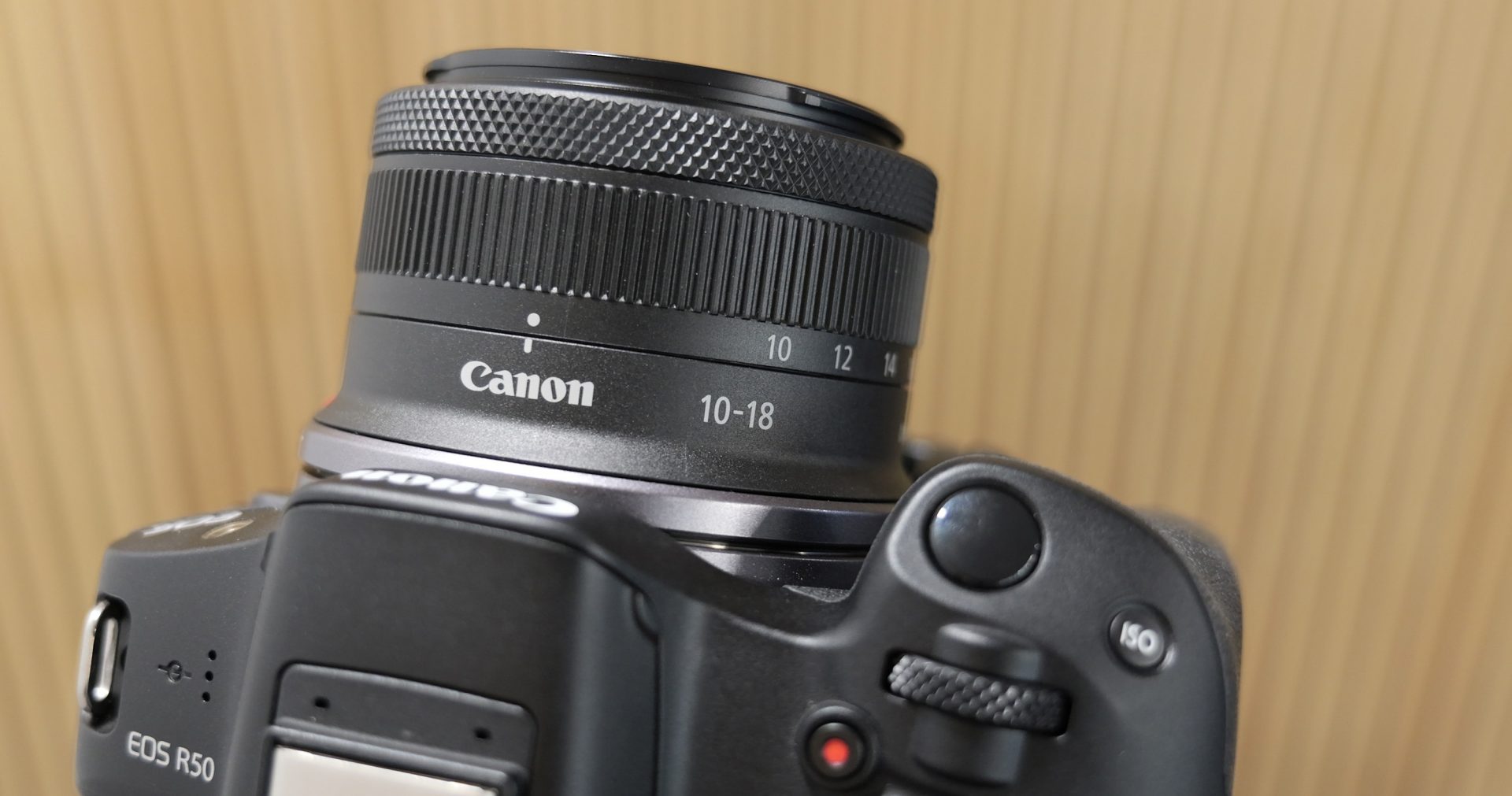Canon RF-S 10-18mm f4.5-6.3 review so far
-
-
Written by Gordon Laing
The Canon RF-S 10-18mm f4.5-6.3 IS STM is a compact ultra-wide angle zoom designed for EOS R mirrorless cameras with cropped APS-C sensors. It’s not compatible with EOS M cameras, but owners of that system have the older EF-M 11-22 as an ultra-wide option.
I got my hands-on a pre-production RF-S 10-18 and in the following video I’ll show you what I know so far. If you prefer to read the written highlights, keep scrolling!
Announced in November 2023, the 10-18 becomes the fourth RF-S lens and the widest to date, delivering coverage equivalent to 16-29mm when mounted on APS-C bodies like the R100, R50, R10 and R7, or indeed on full-frame EOS R bodies when they’re in a cropped mode.
This makes it perfect for capturing expansive landscapes, large buildings, cramped interiors or of course filming pieces to camera and vlogging.
In the absence of third-party options, it’s the only native ultra-wide lens designed for EOS-R cameras with cropped sensors at the time I made this, but if you’re willing to adapt, there’s also the older EF-S 10-18mm f4.5-5.6 IS STM to consider, admittedly larger and heavier but one third of a stop brighter at the long-end and cheaper too at around $250 or pounds.
There’s also the even older and larger EF-S 10-22mm with its longer reach and brighter f3.5-4.5 aperture to weigh-up, and bargains to be had on it second-hand, again if you’re willing to adapt.
Alternatively if you’re thinking of going full-frame or already have a mix of bodies, the RF 10-20mm f4L, launched just one month earlier, also delivers a similar range, but its full-frame compatibility and L-quality means a high-price of around $2300 or pounds, plus it’s pretty hefty for use on an APS-C body.
Before moving on, I feel it would also be remiss not to mention Sigma’s recently announced 10-18mm f2.8 DC DN, designed for APS-C mirrorless cameras and boasting a brighter and constant f2.8 aperture for around $600 or pounds. Right now it’s only available for Sony-e, Leica-L and Fujifilm-X mounts, but I really hope they can work something out with Canon and Nikon in the near future.
But for now, the RF-S 10-18 is the only native option designed for Canon EOS R bodies with APS-C sensors, so let’s get on with it. First things first, this is a very compact and lightweight lens, thanks partly to the fairly modest aperture and use of plastic moulded elements. It measures 69mm in diameter, 45mm long in its retracted state, and weighs just 150g.
You’ll barely notice it when mounted on a camera, and it’s perfectly-matched for the smaller R50 and R100.
Compare that to the EF-S 10-18mm at 75x72mm and 240g, and that’s without the EF to EOS R adapter required for mirrorless bodies. Canon also reckons the new lens is sharper in the corners, and I will of course test that claim.
The tiny size means there’s not room for many controls. The narrow zoom ring is twisted first to extend the lens for use, before then adjusting the focal length.
Towards the end of the barrel is a combined manual focusing and customisable RF control ring, before you reach a 49mm filter thread. As a budget lens, there’s no hood supplied and no official weather sealing.
The lens employs STM focusing and has optical image stabilisation, claiming four stops on bodies without IBIS, or six on those that do, and with its ultra wide coverage, there’s plenty of latitude to accommodate the extra crop of digital movie stabilisation to further iron-out any wobbles when vlogging handheld.
As a variable aperture lens, the maximum f-stop is f4.5 at 10mm or f6.3 at 18mm. Neither are going to deliver much or any blurring in the background unless you’re presenting objects at a very close range. The aperture dims to f5 at 11mm, then to f5.6 at 13mm, then to f6.3 at 15 to 18mm.
Once I get my hands on a final production lens, I’ll add sample images here before following-up with a full video testing and comparing the quality and overall performance.
Right now though, the RF-S 10-18 is a very welcome addition to the catalogue of native lenses designed for EOS R bodies with cropped sensors. Until now, there was no practical option for achieving ultra-wide coverage on these bodies without adapting old EF-S lenses. Now finally there’s a compelling native option.
So far the RF-S releases are looking eerily similar in range and spec to the previous EF-M catalogue, which would mean the zooms are now covered and we may see some small primes next. I really hope so as again, in the absence of third party options, having to rely on adapted DSLR lenses or unnecessarily large and expensive RF full frame lenses is far from ideal. Canon needs to give APS-C more lens love or at least allow Sigma and Tamron to release for it.
Check prices on the Canon RF-S 10-18mm at B&H, Adorama, WEX UK or Calumet.de. Alternatively get yourself a copy of my In Camera book, an official Cameralabs T-shirt or mug, or treat me to a coffee! Thanks!




